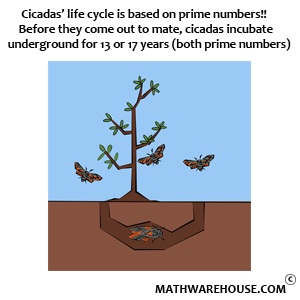Quick Overview
- The definition of the derivative is used to find derivatives of basic functions.
- Derivatives always have the $$\frac 0 0$$ indeterminate form. Consequently, we cannot evaluate directly, but have to manipulate the expression first.
- We can use the definition to find the derivative function, or to find the value of the derivative at a particular point.
- There are a few standard variations in how we write out the definition (see below for details)
Variations in the Derivative Definition
The following are all standard variations for writing the definition of the derivative of $$f(x)$$. The examples and exercises that follow will make use of each variation.
- $$\displaystyle f'(x) = \lim_{\Delta x \to 0} \frac{f(x+\Delta x) - f(x)}{\Delta x}$$
- $$\displaystyle f'(x) = \lim_{h\to 0} \frac{f(x + h) - f(x)} h$$
- $$\displaystyle f'(a) = \lim_{x\to a} \frac{f(x) - f(a)}{x-a}$$
Examples
Example 1
Use the first version of the definition of the derivative to find $$f'(3)$$ for $$f(x) = 5x^2$$
Step 1Replace the $$x$$'s with 3's in the definition.
$$ \begin{align*} f'(3) & = \displaystyle\lim_{\Delta x \to 0} \frac{f(3+\Delta x) - f(3)}{\Delta x} \end{align*} $$
Note: '$$\Delta x$$' is considered a single symbol. So replacing the $$x$$'s with 3's does not change the $$\Delta x$$'s
Step 2Evaluate the functions in the definition.
$$ \begin{align*} f'(3) & = \displaystyle\lim_{\Delta x \to 0} \frac{\blue{f(3+\Delta x)} - \red{f(3)}}{\Delta x}\\[6pt] & = \displaystyle\lim_{\Delta x \to 0} \frac{\blue{5(3+\Delta x)^2} - \red{5(3^2)}}{\Delta x}\\[6pt] & = \displaystyle\lim_{\Delta x \to 0} \frac{\blue{5\left(9+6\Delta x + (\Delta x)^2\right)} - \red{45}}{\Delta x}\\[6pt] & = \displaystyle\lim_{\Delta x \to 0} \frac{\blue{45+30\Delta x + 5(\Delta x)^2} - \red{45}}{\Delta x} \end{align*} $$
Step 3Simplify until the denominator no longer approaches 0 when $$\Delta x \to 0$$
$$ \begin{align*} f'(3) & = \displaystyle\lim_{\Delta x \to 0} \frac{45+30\Delta x + 5(\Delta x)^2 - 45}{\Delta x}\\[6pt] & = \displaystyle\lim_{\Delta x \to 0} \frac{30\Delta x + 5(\Delta x)^2}{\Delta x}\\[6pt] & = \displaystyle\lim_{\Delta x \to 0} \frac{\Delta x\left(30 + 5\Delta x\right)}{\Delta x}\\[6pt] & = \displaystyle\lim_{\Delta x \to 0} (30 + \Delta x) \end{align*} $$
Step 4Evaluate the simpler limit.
$$\displaystyle\lim_{\blue {\Delta x \to 0}} (30 + \blue{\Delta x})= 30 + \blue 0 = 30$$
Answer$$f'(3) = 30$$ when $$f(x) = 5x^2$$
Example 2
Use the second version of the definition of the derivative to find $$\frac{df}{dx}$$ for the function $$f(x) = \sqrt x$$
Step 1Evaluate the functions in the definition.
$$ \begin{align*} \frac{df}{dx} & = \displaystyle\lim_{h\to 0} \frac{f(x+h) - f(x)} h\\[6pt] & = \displaystyle\lim_{h\to 0} \frac{\sqrt{x+h} - \sqrt x} h\\[6pt] \end{align*} $$
Step 2Rationalize the numerator.
$$ \begin{align*} \frac{df}{dx} & = \displaystyle\lim_{h\to 0} \frac{\sqrt{x+h} - \sqrt x} h \cdot \blue{\frac{\sqrt{x+h}+\sqrt x}{\sqrt{x+h}+\sqrt x}}\\[6pt] & = \displaystyle\lim_{h\to 0} \frac{(\sqrt{x+h})^2 - (\sqrt x)^2}{h(\sqrt{x+h}+\sqrt x)}\\[6pt] & = \displaystyle\lim_{h\to 0} \frac{x+h - x}{h(\sqrt{x+h}+\sqrt x)} \end{align*} $$
Step 3Simplify until the denominator no longer approaches 0 as $$h\to 0$$.
$$ \begin{align*} \frac{df}{dx} & = \displaystyle\lim_{h\to 0} \frac{\blue x+h - \blue x}{h(\sqrt{x+h}+\sqrt x)}\\[6pt] & = \displaystyle\lim_{h\to 0} \frac{\red h}{\red h(\sqrt{x+h}+\sqrt x)}\\[6pt] & = \displaystyle\lim_{h\to 0} \frac{1}{\sqrt{x+h}+\sqrt x} \end{align*} $$
Step 4Evaluate this simpler limit.
$$ \displaystyle\lim_{\blue{h\to 0}} \frac{1}{\sqrt{x+\blue h}+\sqrt x} = \frac{1}{\sqrt{x+\blue 0}+\sqrt x} = \frac{1}{\sqrt x+\sqrt x} = \frac{1}{2\sqrt x} $$
Answer$$\displaystyle \frac{df}{dx} = \frac 1 {2\sqrt x}$$ when $$f(x) = \sqrt x$$.
Example 3
Use the third version of the definition of the derivative to evaluate $$f'(5)$$ when $$f(x) = \frac 1 x$$
Step 1Setup the definition of the derivative using the appropriate value for $$a$$.
Note that $$a = 5$$ in this exercise, since we are evaluating $$f'(5)$$.
$$ \begin{align*} f'(5) & = \displaystyle\lim_{x\to 5} \frac{f(x) - f(5)}{x - 5} \end{align*} $$
Step 2Evaluate $$f(x)$$ and $$f(5)$$.
$$ f'(5) = \displaystyle\lim_{x\to 5} \frac{\blue{f(x)} - \red{f(5)}}{x - 5} = \displaystyle\lim_{x\to 5} \frac{\blue{\frac 1 x} - \red{\frac 1 5}}{x - 5} $$
Step 3Simplify until the denominator no longer approaches 0 as $$x$$ approaches 5.
$$ \begin{align*} f'(5) & = \displaystyle\lim_{x\to 5} \frac{\frac 1 x - \frac 1 5}{x - 5}\\[6pt] & = \displaystyle\lim_{x\to 5} \frac{\left(\frac 1 x - \frac 1 5\right)}{(x - 5)} \cdot \blue{\frac{5x}{5x}}\\[6pt] & = \displaystyle\lim_{x\to 5} \frac{\frac{\blue{5x}}x - \frac{\blue{5x}} 5}{\blue{5x}(x - 5)}\\[6pt] & = \displaystyle\lim_{x\to 5} \frac{\blue 5 - \blue x}{\blue{5x}(x - 5)}\\[6pt] & = \displaystyle\lim_{x\to 5} \frac{-1\red{\left(x - 5\right)}}{5x\red{(x - 5)}}\\[6pt] & = \displaystyle\lim_{x\to 5} \left(-\frac 1 {5x}\right) \end{align*} $$
Step 4Evaluate the simpler limit.
$$ f'(5) = \displaystyle\lim_{\blue{x\to 5}} \left(-\frac 1 {5\blue x}\right) = - \frac 1 {5\blue{(5)}} = -\frac 1 {25} $$
Answer$$f'(5) = -\frac 1 {25}$$ when $$f(x) = \frac 1 x$$.
A Word on Notation
It is cumbersome to always have to write "find the derivative when $$f(x) =$$ ..." However, we can adapt the $$\frac{df}{dx}$$ notation to communicate the same idea. The notation
$$\frac d {dx}\left( \sin 2x\right)$$
can be read "find the derivative of $$f(x) = \sin 2x$$."
Example 4
Use the first variation of the definition of the derivative to find $$\frac{d}{dx}\left(\sin 2x\right)$$ when $$x$$ is in radians.
Step 1Evaluate the functions in the definition of the derivative.
$$ \begin{align*} \frac{d}{dx}\left(\sin 2x\right) & = \lim_{\Delta x \to 0} \frac{\blue{f(x+\Delta x)} - \red{f(x)}}{\Delta x}\\[6pt] & = \lim_{\Delta x \to 0} \frac{\blue{\sin\left(2(x+\Delta x)\right)} - \red{\sin 2x}}{\Delta x}\\[6pt] & = \lim_{\Delta x \to 0} \frac{\sin\left(2x+2\Delta x\right) - \sin 2x}{\Delta x} \end{align*} $$
Step 2Use the Sum of Angles identity for the sine function.
Recall that $$\sin(A+B) = \sin A\cos B + \sin B\cos A$$.
$$ \begin{align*} \frac{d}{dx}\left(\sin 2x\right) & = \lim_{\Delta x \to 0} \frac{\sin\left(\blue{2x}+\red{2\Delta x}\right) - \sin 2x}{\Delta x}\\[6pt] & = \lim_{\Delta x \to 0} \frac{\sin \blue{2x}\cos \red{2\Delta x}+\sin \red{2\Delta x}\cos \blue{2x} - \sin 2x}{\Delta x} \end{align*} $$
Step 3Rearrange the numerator so the terms containing $$\sin 2x$$ are together. Then, factor out the $$\sin 2x$$.
$$ \begin{align*} \frac{d}{dx}\left(\sin 2x\right) & = \lim_{\Delta x \to 0} \frac{\blue{\sin 2x} \cos 2\Delta x +\sin 2\Delta x \cos 2x - \blue{\sin 2x}}{\Delta x}\\[6pt] & = \lim_{\Delta x \to 0} \frac{\blue{\sin 2x}\cos 2\Delta x - \blue{\sin 2x}+\sin 2\Delta x \cos 2x}{\Delta x}\\[6pt] & = \lim_{\Delta x \to 0} \frac{\blue{\sin 2x}\left(\cos 2\Delta x - 1\right)+\sin 2\Delta x \cos 2x}{\Delta x} \end{align*} $$
Step 4Separate into two limits.
$$ \begin{align*} \frac{d}{dx}\left(\sin 2x\right) & = \lim_{\Delta x \to 0} \frac{\blue{\sin 2x \left(\cos 2\Delta x - 1\right)}+\red{\sin 2\Delta x \cos 2x }}{\Delta x}\\[6pt] & = \lim_{\Delta x \to 0}\left(\frac{\blue{\sin 2x \left(\cos 2\Delta x - 1\right)}}{\blue{\Delta x}}+\frac{\red{\sin 2\Delta x \cos 2x }}{\red{\Delta x}}\right)\\[6pt] & = \lim_{\Delta x \to 0} \frac{\blue{\sin 2x \left(\cos 2\Delta x - 1\right)}}{\blue{\Delta x}}+\lim_{\Delta x \to 0}\frac{\red{\sin 2\Delta x \cos 2x }}{\red{\Delta x}} \end{align*} $$
Step 5Evaluate the first limit using the techniques from Indeterminate Limits---Cosine Forms.
$$ \begin{align*} \lim_{\Delta x \to 0} \frac{\sin 2x \left(\cos 2\Delta x - 1\right)}{\Delta x} & = \blue{\lim_{\Delta x \to 0} \frac{\cos 2\Delta x - 1}{\Delta x}} \cdot \sin 2x \\[6pt] & = \blue{(0)} \cdot \sin 2x \\[6pt] & = 0 \end{align*} $$
Our derivative calculations now look like this:
$$\frac{d}{dx}\left(\sin 2x\right) = 0 + \displaystyle\lim_{\Delta x \to 0}\frac{\sin 2\Delta x \cos 2x}{\Delta x}$$
Step 6Evaluate the remaining limit using the techniques from Indeterminate Limits---Sine Forms.
$$ \begin{align*} \lim_{\Delta x \to 0}\frac{\sin 2\Delta x \cos 2x}{\Delta x} & = \red{\lim_{\Delta x \to 0}\frac{\sin 2\Delta x}{\Delta x}}\cdot \cos 2x\\[6pt] & = \red{(2)}\cdot \cos 2x\\ & = 2\cos 2x \end{align*} $$
Answer$$\displaystyle \frac{df}{dx} = 2\cos 2x$$ when $$f(x) = \sin 2x$$ and $$x$$ is in radians.




















